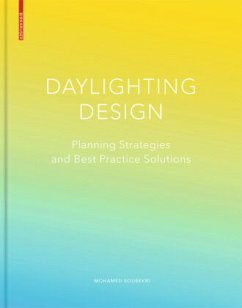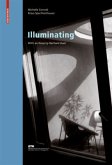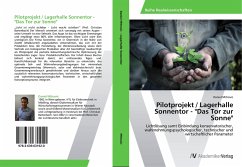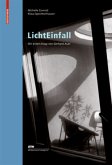For thousands of years people have aligned their homes with the sun. This tendency decreased with the availability of artificial light. Yet, due to the health effects of artificial light as well as rising energy costs, the issue of designing with daylight is of great importance again today. The primary objective of daylight systems is to make maximum use of daylight for certain building types and climates. The book documents the various dimensions of the optimum use of daylight with particular reference to window orientation, light distribution, and prism technology, and discusses the health and economic related aspects. In the final chapter, existing design concepts are documented in detail, including the expansion of the Art Institute of Chicago Museum in the United States byRenzo Piano Building Workshop,Terminal 3 of the Changi Airport in Singapore by Skidmore, Owings & Merrill, and the Clever House in Germany by Behnisch Architekten.
Über Jahrtausende hinweg haben Menschen ihre Häuser nach der Sonne ausgerichtet. Mit der Verfügbarkeit von künstlichem Licht geriet dies zunehmend aus dem Blick. Angesichts der gesundheitlichen Auswirkungen des Kunstlichts einerseits, steigender Energiekosten andererseits ist das Thema der Tageslichtplanung heute jedoch wieder von großer Bedeutung. Das vorrangige Ziel von Tageslichtsystemen besteht darin, für bestimmte Gebäudetypen und Klimaverhältnisse Tageslicht maximal zu nutzen. Das Buch dokumentiert mit besonderem Bezug auf Fensterorientierung, Lichtverteilung und Prismentechnik die verschiedenen Dimensionen der optimalen Tageslichtnutzung und geht dabei auch auf die gesundheitlichen und ökonomischen Aspekte ein. In einem abschließenden Kapitel werden konkrete Gestaltungskonzepte detailliert dokumentiert, u.a. die Erweiterung des Art Institute of Chicago Museum, USA, von Renzo Piano Building Workshop und der Terminal 3 des Changi Airport, Singapore, von Skidmore, Owings & Merrill.
Hinweis: Dieser Artikel kann nur an eine deutsche Lieferadresse ausgeliefert werden.
Über Jahrtausende hinweg haben Menschen ihre Häuser nach der Sonne ausgerichtet. Mit der Verfügbarkeit von künstlichem Licht geriet dies zunehmend aus dem Blick. Angesichts der gesundheitlichen Auswirkungen des Kunstlichts einerseits, steigender Energiekosten andererseits ist das Thema der Tageslichtplanung heute jedoch wieder von großer Bedeutung. Das vorrangige Ziel von Tageslichtsystemen besteht darin, für bestimmte Gebäudetypen und Klimaverhältnisse Tageslicht maximal zu nutzen. Das Buch dokumentiert mit besonderem Bezug auf Fensterorientierung, Lichtverteilung und Prismentechnik die verschiedenen Dimensionen der optimalen Tageslichtnutzung und geht dabei auch auf die gesundheitlichen und ökonomischen Aspekte ein. In einem abschließenden Kapitel werden konkrete Gestaltungskonzepte detailliert dokumentiert, u.a. die Erweiterung des Art Institute of Chicago Museum, USA, von Renzo Piano Building Workshop und der Terminal 3 des Changi Airport, Singapore, von Skidmore, Owings & Merrill.
Hinweis: Dieser Artikel kann nur an eine deutsche Lieferadresse ausgeliefert werden.








